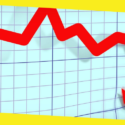Balanced Funds And Why You Should Have Them in Your Portfolio?
This post was last updated on February 19th, 2024

This Quick Reckoner Guide is formatted in the form of Frequently Asked Questions and Their Answers format so that the prospective investors can make their own decisions wisely and with prior knowledge of the risks and benefits involved.
So, For Starters, What Are Balanced Funds?
Balanced Funds are the kind of funds that can be used to invest in both equity and debt. This way users can then increase their safety levels as compared to funds that of pure equity in nature. Fund managers then can also adjust the proportion of the mix of equity and debt with regards to the current market valuations.
What Are Its Associated Benefits?
A balanced mutual fund makes for a good option for the investors who are investing in the intermediate term. Balanced funds are a kind of hybrid fund (which will be explained in greater detail in a later section) that involves bonds as well as stocks. The idea of a “balanced” fund is to keep steady the overall balance within the two kinds of asset classes under most circumstances. Usually, around 40% of the total assets are placed in bonds and 60% in stocks.
Importance of Balanced Mutual Funds in an Ideal Mutual Fund Portfolio
Ideally, any good mutual fund portfolio ought to contain a minimum of three funds and a maximum of about five funds, so that there is sufficient diversity. Now, the inclusion of balanced funds gears the overall investment towards safety. Balanced Mutual Funds are generally considered the safest and one of the best mutual funds investment because, due to its nature as a hybrid fund, balanced funds are a suitable mix of both debts as well as equity funds. It is ideal for investors investing for the first time and for the investors who do not want too much of a risk.
How is Balanced Fund a Hybrid Fund?
Just like the name informs, Hybrid funds are the kind of funds that can be used to invest in multiple asset classes. Much in the manner of most of the Hybrid funds, which invest in various blends of debt and equity, balanced funds are the kind that derives their name from the balanced allocation of equity and debt, so that the proportion between them is kept close to 50/50, usually tipping one way or the other with regards to the preference of the investors (as explained later in the article).
Are Balanced Funds Good for a Retirement Portfolio?
An ideal retirement portfolio ought to include a mix of stocks, bonds as well as a bit of cash. Therefore, while investing through mutual funds, you have to make sure that the funds are invested in the right asset classes. Of all the popular mutual funds for retired people, such as target-date funds, life-cycle funds, balanced funds, etc., balanced funds make a lot of sense for investors, due to the following reasons.
Retired investors generally look for a balanced admixture of income, modest appreciation of capital, and first and foremost, safety. Balanced funds tend to cover all of these bases, and the number of its investments in each of the asset classes generally remains within the set limits of a minimum as well as maximum, so that risk is kept to a minimum.
ICICI Prudential Balanced Advantage Fund is a balanced fund which is generally classified as an equity-oriented one. It has shown consistently good performance since inception. Due to its nature, The ICICI Prudential Mutual Funds makes for one of the very best available in the mutual fund market. Since balanced funds are a kind of investment instrument, where the asset management invests the gathered money into both debt and equity funds, ICICI Prudential Balanced Advantage Fund allows its investors to receive the advantage of both equity and debt fundings. It thereby is perfect for the investors who wish for good returns in a longer term and are fine with a slightly higher profile of risk. This quality makes the fund suitable for investors who want higher returns in comparison to the funds like Monthly Income Plans or MIPs that are debt-oriented. Also, the risks are lower than most other balanced equity funds.
Equity Funds v/s Balanced Funds
The latter is safer since they protect the capital by investing in debt.
A prospective investor could choose to invest in multiple balanced funds tool. Since balanced funds invest the majority of its assets, i.e., 60-80% into equities and the leftover in debt, there are greater chances of stability when the market value stumbles.
An explanation for this situation would be that the debt section stabilizes the return of funds. Therefore, while the rise regarding these funds will high enough compared to the pure equity funds, they also won’t tumble down all of a sudden, in case of an unexpected downturn of the market.
Tax Efficiency and Automatic Rebalancing:
A definite advantage with balanced funds lies with the benefits regarding tax efficiency as well as automatic rebalancing. Balanced funds allow the investors with a way of possessing debt exposure, even as being tax efficient, because, despite its hybrid nature, taxation treats balanced funds like equity funds. Therefore an investment in balanced funds allows the investor to enjoy tax-free dividends. Moreover, there are no taxes on long-term equity gains. Rebalancing of the assets is also no longer a worry since it gets managed by the fund manager.
ICICI Prudential Balanced Advantage Fund is a top performing one in its respective field with a track record boasting of steady, long-term performance, with a five-star rating.
Balanced Funds: Main Features:
- Diversification of Investor Portfolio – Investors invest in balanced funds to diversify their portfolio so that they can invest in a wide variation of instruments such as bonds and equities.
- Yielding Good Returns from Investment – Investors also tend to invest in balanced funds to yield returns that are of a sizeable portion since a huge portion of them get invested in equities.
- Re-balancing of Portfolio – Balanced funds can automatically re-balance the investor’s portfolio, which can be of a huge help especially when markets are unstable. To help this reason, fund managers sell the equity funds, therefore maintaining the highest level of funds and the other way around.
Balanced funds are of similar nature with income funds, the only exception being their consisting of multiple kinds of instruments that are non-debt. These are preferred stock, common stock, real estate, etc. These funds tend to yield higher return concerning bond funds or money market, despite its conservative nature. They can also invest in varied holdings having a high and low risk.
Which Investors Invest in Balanced Funds?
- New Investors:
First-time Investors in the mutual funds generally look to balance funds for tax benefits. Apart from that, balanced funds make for the perfect investment option for the newbies in the field due to the following reasons. Firstly, it makes for a balanced portfolio, since both debt and equity are in harmony.
Secondly, the balanced nature of the investor portfolio also ensures that investors can perceive reasonable growth in their investment records.
Thirdly, this helps in keeping the principal investment protected.
- Conservative Investors:
Balanced funds make for great options for conservative investors like the retired people. It is also good for people who want a safe and long-term investment with sure returns. A commendable number of conservative investors invest in balanced funds due to its balanced nature of strategy. This helps in conceiving of the best outcome regardless of the downfall of bonds or equity market.
- Investors Looking for Better Returns in Comparison to Debt Fund Investments:
On an average, debt funds provide around 10% returns. Some investors are fine taking some marginal risks if it gives them much higher returns. Balanced funds for them prove to be highly profitable.
Two Different Kinds of Balanced Funds:
Balanced Funds That Are Equity-Oriented
The portfolio involving such balanced mutual funds usually invests the major portions into equities and such derivatives. Much of the capital in that scheme gets invested in various debt instruments and money market. Their aggressive capital appreciation characterizes balanced mutual funds that are equity-oriented. For such funds, income through debt instruments interests is of secondary importance.
Despite mutual funds with regular equity and balanced mutual funds that are equity-oriented offering similar returns, the associated risk is much lower in case of the latter.
Balanced Funds That Are Debt-Oriented:
Balanced funds that are debt-oriented make for an ideal investment option for conservative investors. A huge chunk of money in a portfolio of such funds gets put into instruments involving debt as well as the money market. The involved risks are pretty low, and they potentially provide the investors with long-term returns that are also consistent. Moreover, the equity part of the portfolio can help the fund to maximize the benefits of capital markets with increasing equity. This also aids in protecting instruments of debt from rate risks that involve interests and inflations.
Recommended For You
Monetary and Financial Tips For Young Adults
Most Inside
Most Inside offers high-quality recommendations and valuable updates to enhance all aspects of your life, providing premium guidance and enriching experiences.




